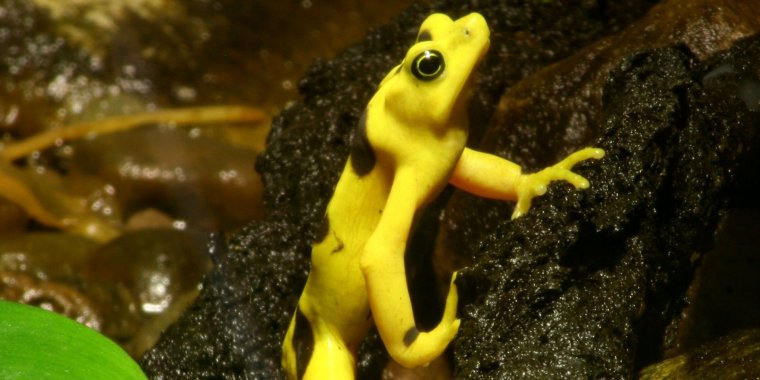| News / Science News |
Deadly fungal disease ‘caused greatest biodiversity loss ever recorded’
Chytridiomycosis, caused by two strains of the fungus Batrachochytrium dendrobatidis, or Bd, is responsible for the decline of at least 501 amphibian species, accounting for 6.5 per cent of all known amphibian species. Among those, 90 are confirmed or presumed extinct in the wild.

A toad of the Atelopus genus, one of the most affected by the fungus B. dendrobatidis. ![]()
The disease is contributing to the Earth’s sixth mass extinction, the report states, with the findings placing it among the world’s most destructive invasive species.
The study, which is the first global assessment of the impact of chytridiomycosis, highlights how global trade in wildlife has facilitated the rapid spread of the disease.
Amphibians are sold in restaurants or as pets, creating a “functional Pangaea” for infectious diseases, effectively breaking down geographical barriers that once stopped the dispersal of organisms.
The unprecedented lethality of a single disease affecting an entire vertebrate class highlights the threat from the spread of novel pathogens in a globalized world.
The Bd fungus infects the keratinized skin that amphibians develop when they mature and transition from water to land. The resulting chytridiomycosis prevents the amphibian from properly regulating the flow of electrolytes and fluids through its skin, usually leading to heart failure within a few weeks.
The report says the spread of the disease has impinged not only on biodiversity but also on human activities linked to the declining species.
The pharmaceutical industry, for example, uses chemical compounds produced by certain amphibians to make medicines. When a species disappears, the opportunity to use chemicals found in those animals for research also disappears.
Amphibians are also important for the control of agricultural pests.
Because they feed on insects, amphibians also control vectors of diseases such as zika, chikungunya, yellow fever and others transmitted by mosquitoes.
This study confirms what was already suspected by conservation scientists: “Amphibians are the most endangered vertebrates on the planet”.
More attention needs to be paid to biosafety measures that can reduce the risk of introducing these pathogens. Regulation and enforcement of rules on the trade of native plants and meat need to improve. (SciDev.Net)
YOU MAY ALSO LIKE




